Kettle’s Yard: A Tour Through Cambridge’s Modern Art Gallery
Kettle’s Yard, a somewhat modest home in the middle of Cambridge, UK, harbors an impressive art collection of predominantly modern and abstract...
Ruxi Rusu 24 June 2024
Discover the wealth of 19th-century artistic treasures housed within Berlin’s Alte Nationalgalerie, a true gem in Germany’s cultural landscape. Curiosity piqued? We’ve carefully chosen highlights from this collection, each artwork offering a distinct narrative and contributing to the vibrant tapestry of artistic expression from the 1800s.
The gallery was founded in 1861 after a bequest by banker Johann Heinrich Wilhelm Wagener. He requested that the paintings in the collection be publicly displayed. The museum first opened in 1876 in a new building by German architect Friedrich August Stüler. Its design was inspired by Greco-Roman temples.
Around 1800 paintings and 1500 sculptures are housed within the museum’s walls with a focus on German Romanticism and Impressionism. However, the Nationalgalerie was the first museum in the world to acquire French Impressionist art in 1896.
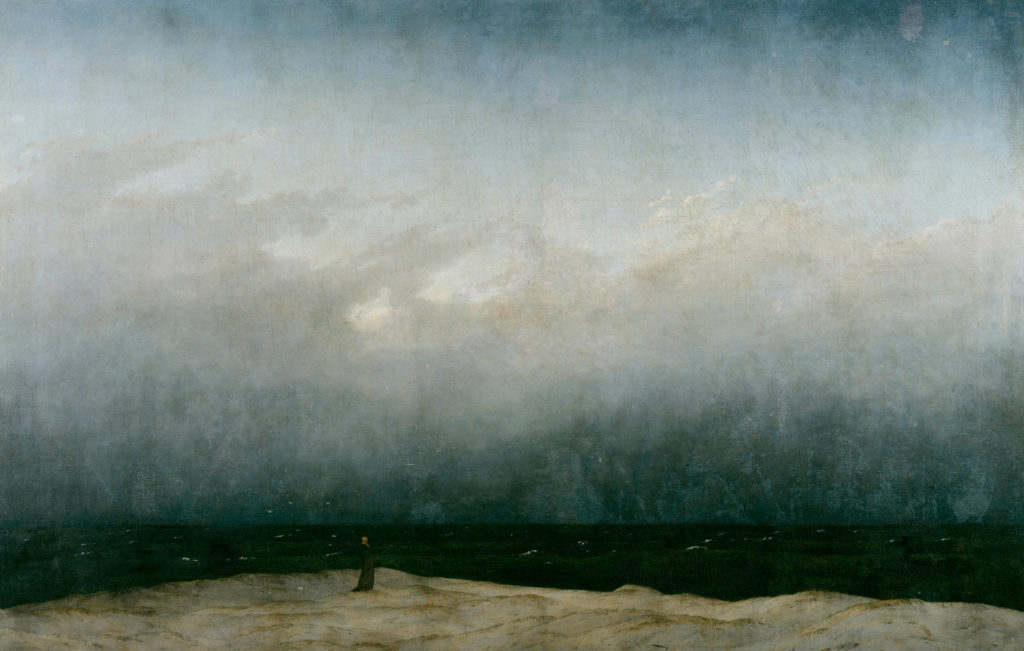
A tiny lonely figure stands before a vast seascape. Caspar David Friedrich (1774-1840), the most celebrated German romantic painter, brings forth the greatness of nature and the insignificance of man. The romantic movement was sparked as a reaction to the Industrial Revolution. For the first time, man had tamed nature. With Monk by the Sea, Friedrich reminds us that nature in reality truly cannot be tamed and that nature is where man finds the glory of God.
The landscape is formed by the three horizontal bands of land, sea, and sky. The only vertical element is the monk. The horizon is low and the sky dominates the canvas. Even though the painting dates from 1808 the composition is truly modern. There are no distinctive boundaries between the sea and the sky. All the elements blend in shades of black and blue. The colors also emit a sense of foreboding.
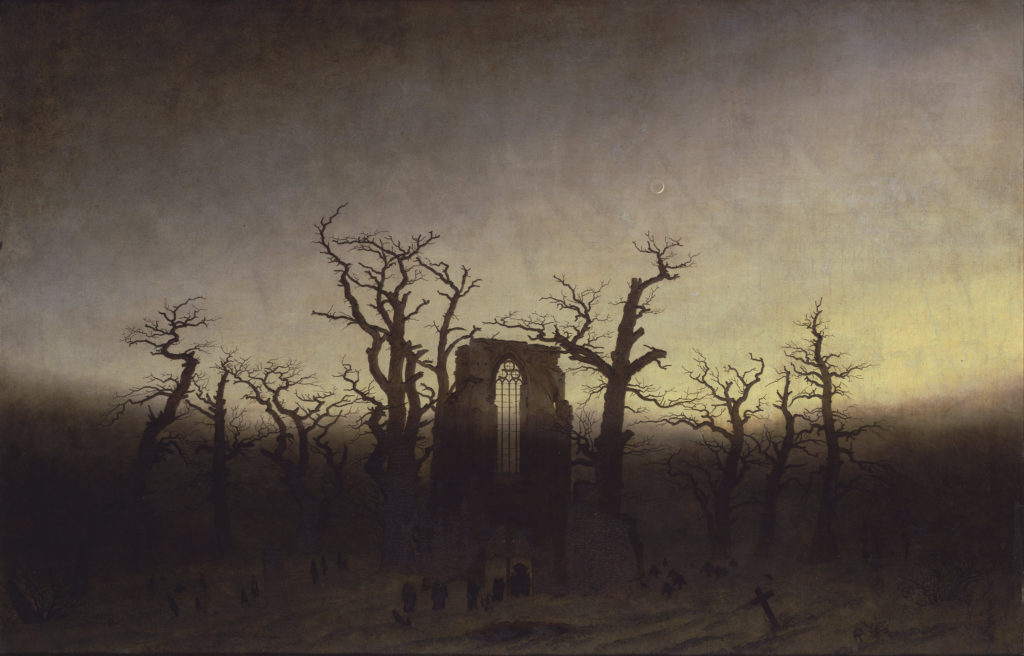
Abbey in the Oakwood is the “pendant piece” of Monk by the Sea. That means that the two paintings work together as a full composition. In this case, religion is the link between them. In the first we have a monk and in the other an abbey. A funeral procession marches to a ruined abbey. A deserted graveyard extends all around them. One can’t help but wonder, has the monk died?
Once again, Friedrich contemplates the insignificance of human creation and the futility of life. The church stands in ruins and the oaks are shriveled and eerie. The message seems to be that everything dies. The only glimmer of hope comes from the dawning skies, the heavenly realm.
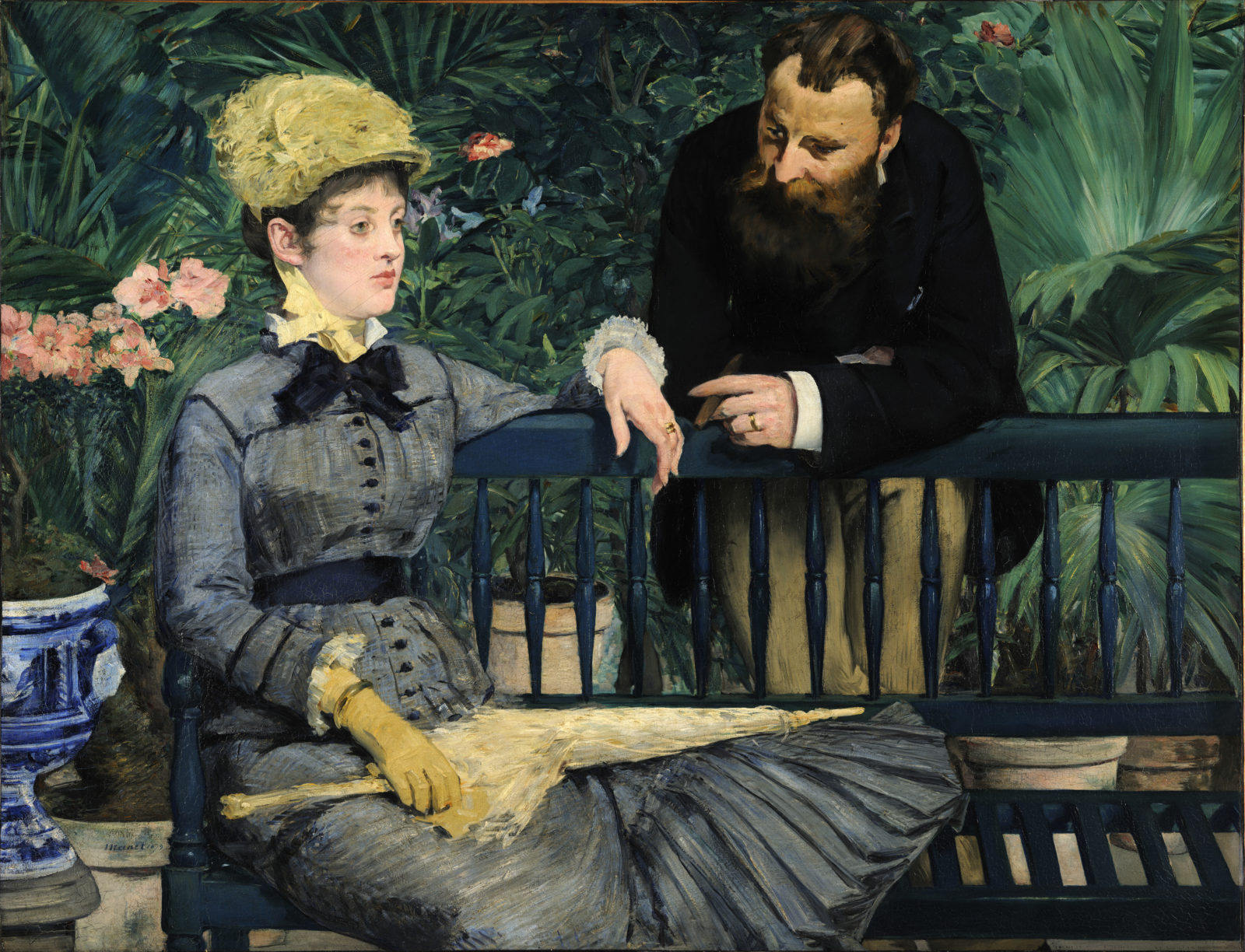
A fashionable couple sits on a bench in a conservatory, a large greenhouse. The woman is distracted by something outside the painting and she is paying no attention to the man. Meanwhile, he seems to be enthralled with her. They are the Guillemets, Manet’s friends and owners of a clothing shop in Paris. The woman’s elegant clothing references their profession. The bench separates the two figures both psychologically and physically but that will not last for long. Almost at the center of the canvas, the artist wants us to focus on their hands as they are about to touch. Edouard Manet (1832-1883) captures a snapshot in time, a still from a couple’s life.
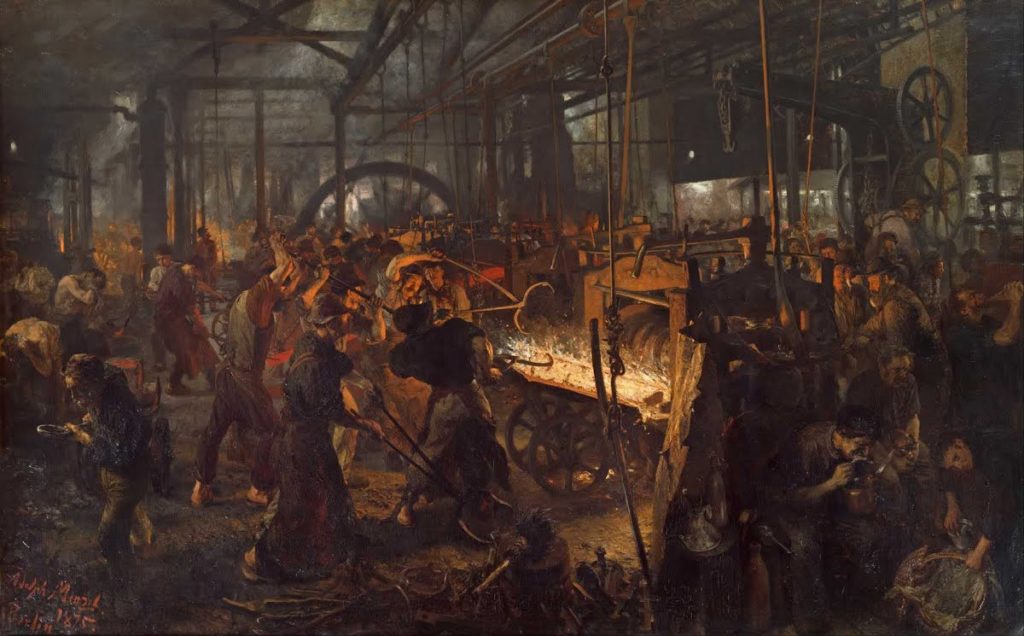
For centuries “history painting”, that is painting of mythology and the Bible, was the only subject deemed appropriate for an accomplished painter. Conversely, the realists turned their attention to the working classes and peasants.
Adolph Menzel (1815-1905) presents us with a scene from an iron factory working at full force. The place is buzzing with activity and we can almost hear the voices of the men as they shout or bark orders. In the foreground, a group of workers are rolling the iron. The intense play of light and shadow illuminates their faces and muscles as they labor. On the right, another group of people are taking a break. Most realists wanted to make a political statement with their works. However, Menzel is most interested in depicting the industrial process and the people involved.
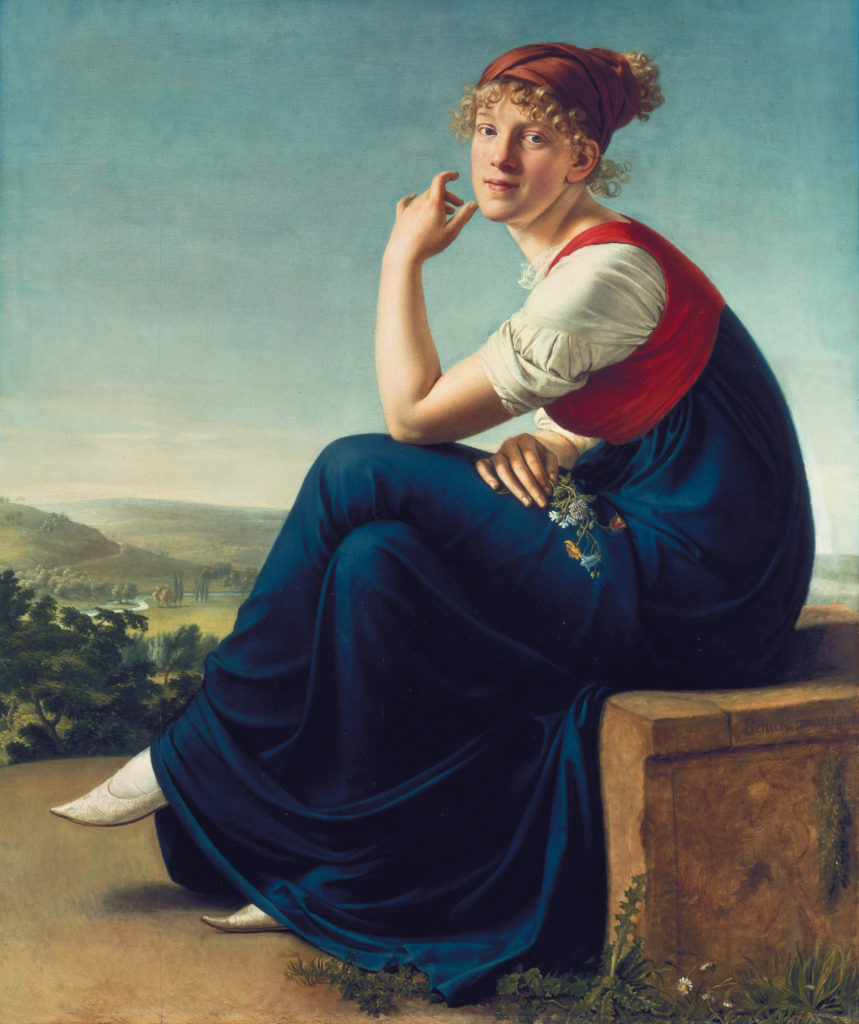
Gottlieb Schick (1776-1812) was a German neoclassical painter, mostly known for his portraiture. In this portrait, Heinrike Dannecker, the wife of a Stuttgart court sculptor, is sitting in profile before an extensive landscape. The woman holds a small flower bouquet. These flowers connect her with the blooming nature in the background. The young lady’s hairstyle and clothing are decidedly classical as is her posture and the landscape that spans behind her. However, Heinrike’s expression has none of the neoclassical artifice. She turns her head naturally towards us as if someone just called her name. Her spontaneous gaze is an honest and curious one.
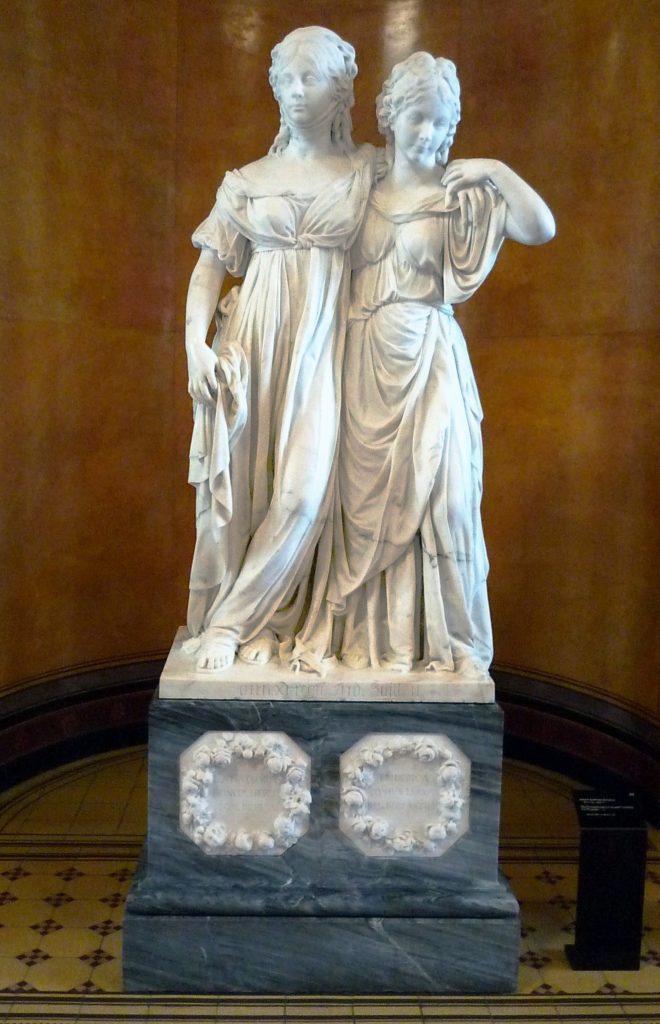
The double statue of Princesses Luise and Friederike of Prussia welcomes the visitors in the foyer of the Alte Nationalgalerie. It is a hallmark of European Classism as it was the first time, two women were rendered life-size. Up to this point, life-size sculpture was suitable only for important military figures, rulers, or personalities lauded for their achievements. An earlier plaster version exists that was used to later convert the composition into marble.
On the left, we find Luise, wife of the crown prince Frederick William II and future queen of Prussia. She stares into the distance with determination. On the right Friederike, wife of Prince Louis, the younger brother of the crown prince. She leans against her sister offering her support as she gracefully holds her hand. The contrasting temperament of the two girls is evident. Luise is portrayed as a dynamic woman, fully aware of her future duties while Friederike is more delicate and tender.
DailyArt Magazine needs your support. Every contribution, however big or small, is very valuable for our future. Thanks to it, we will be able to sustain and grow the Magazine. Thank you for your help!